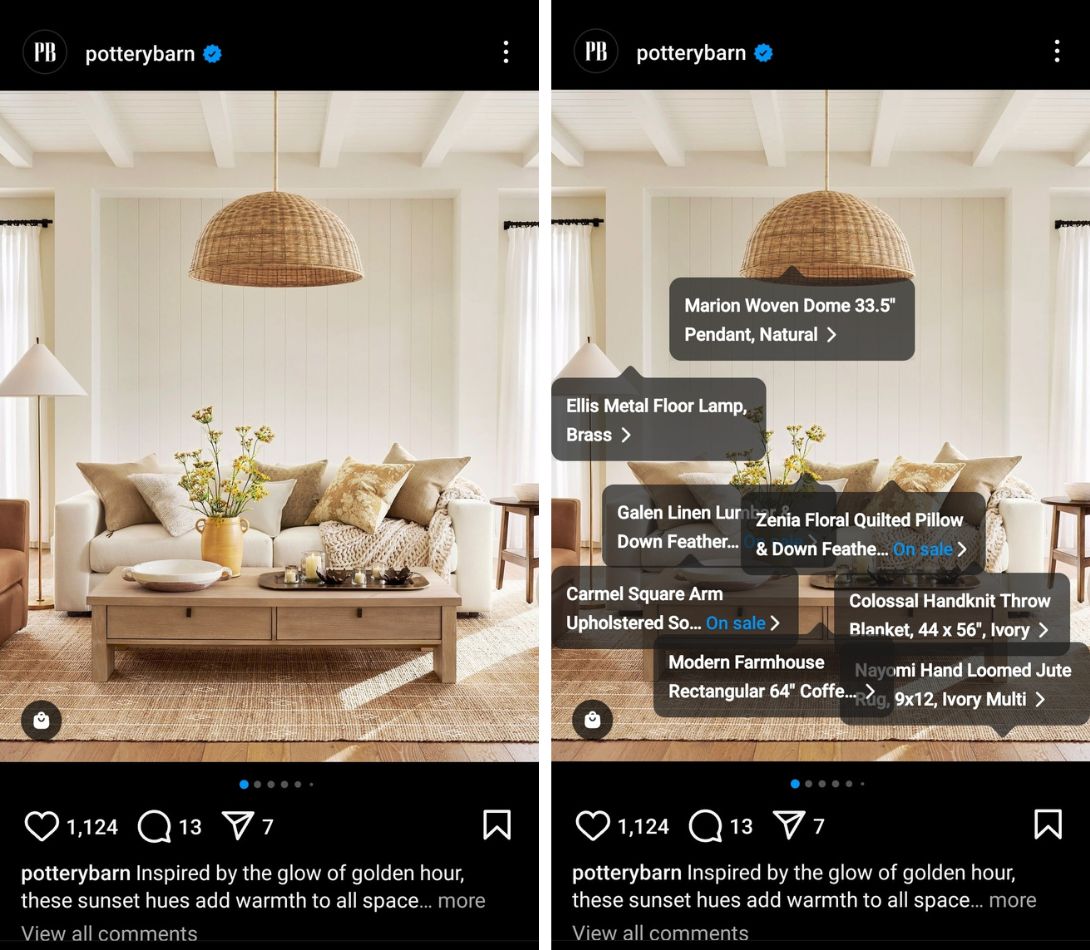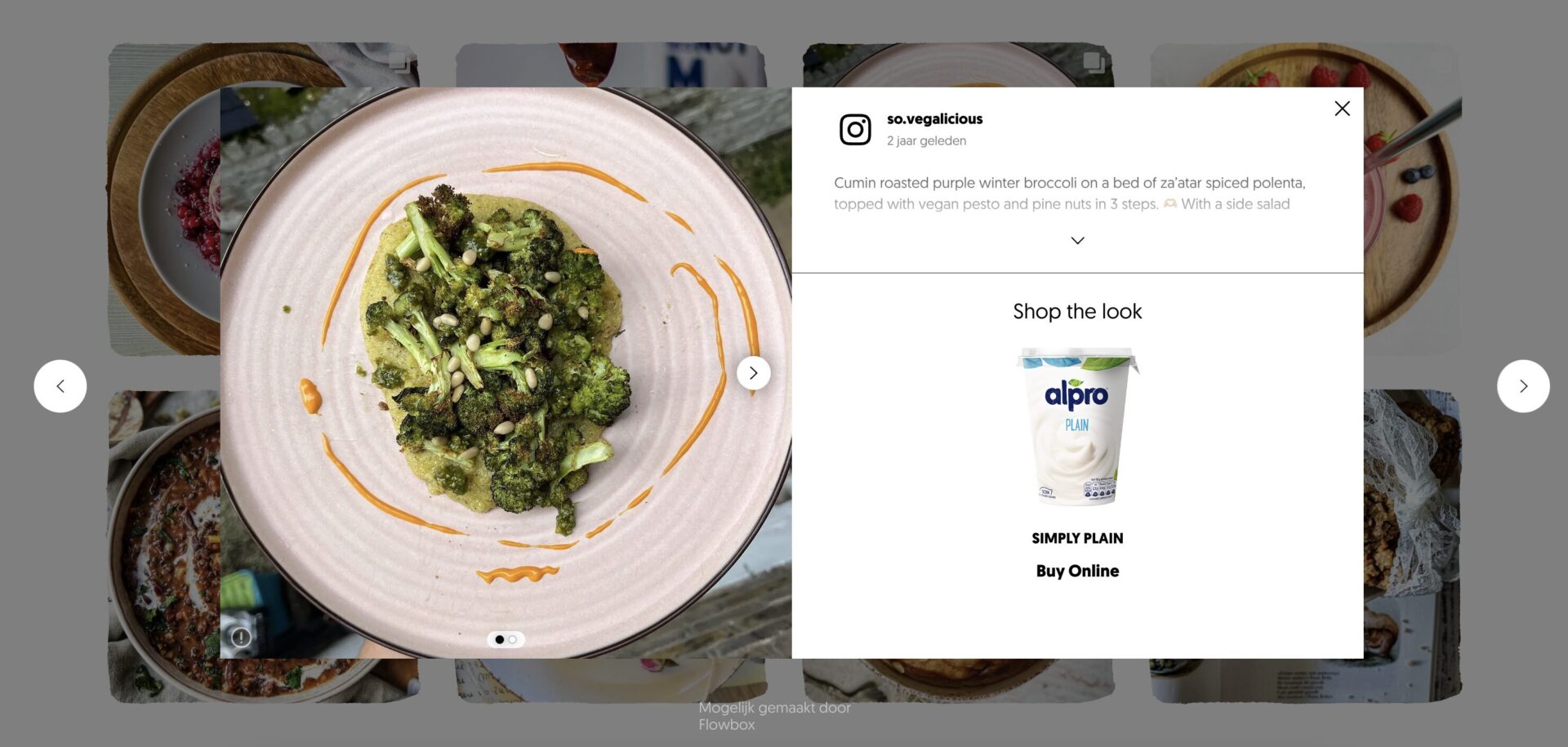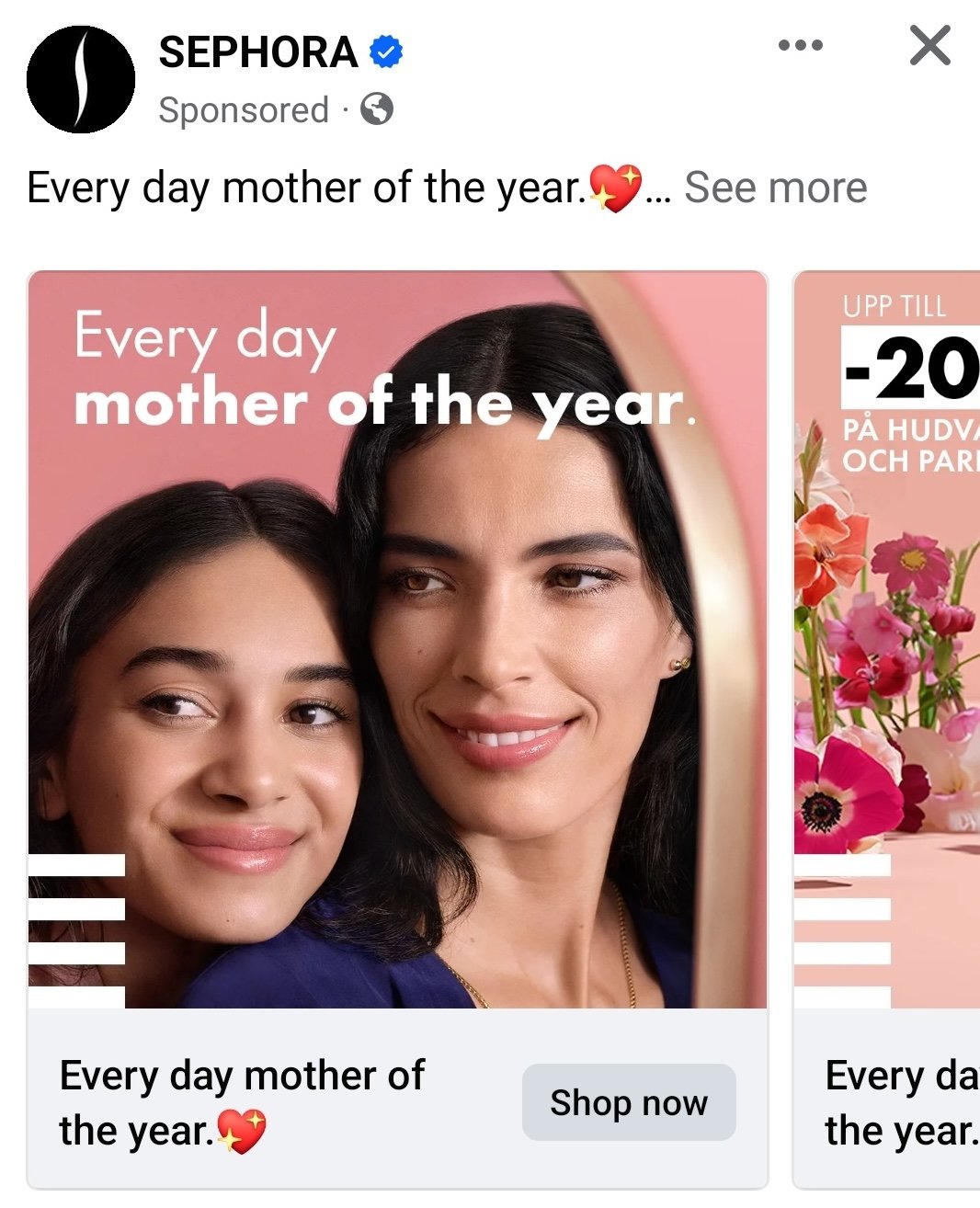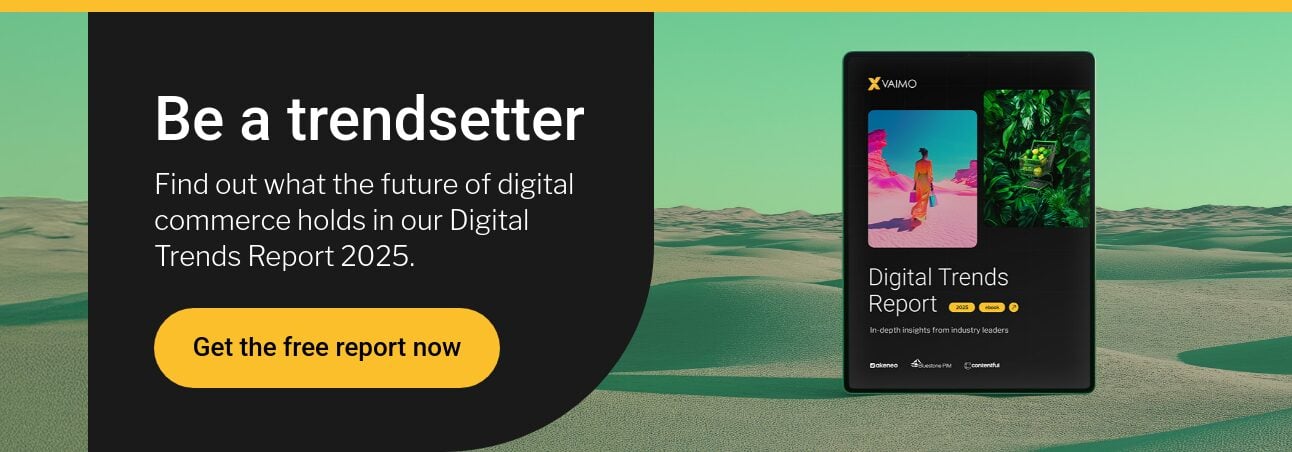We spend more time online than ever before and that has an impact on our shopping behavior. Shoppable content turns everyday digital experiences into opportunities for ecommerce businesses, allowing consumers to make purchases without leaving the platform they’re currently using. It reduces friction in the buyer journey and increases the number of low-funnel touchpoints for digital brands and retailers.
- Shoppable content explained
- The benefits of shoppable content
- The 5 main types of shoppable content (with examples)
- From content to conversions
- Shoppable content turns emotions into actions
- At the intersection of information and inspiration
- Creating a brand strategy around shoppable content
Shoppable content explained
Before we further look at what different brands are doing in the realm of shoppable content, let’s define what it is. Shoppable content is any digital asset – such as social media posts, images, videos, or ads, that consumers can click directly to make a purchase. Sometimes, the customer may have to complete their transaction and checkout process on the brand’s website. But, increasingly, shoppable content is enabling the whole transaction to happen in one place. Platforms like Facebook, Instagram, or TikTok are pioneers in shoppable content, and they form the backbone of social shopping.
Perhaps you also think of social commerce when you hear the term shoppable content. Although shoppable content and social commerce are linked, they do not quite refer to the same concept. Social commerce involves promoting and selling products via social media. For example, as part of your marketing plan, you can post daily photos of featured products on your brand’s Instagram page, and this is social commerce. The meaning of shoppable content is less broad, as it only refers to products that consumers can buy directly through your post on Instagram, either by being redirected to your website or by checking out on Instagram.
Find the ecommerce strategy that suits your business »
The benefits of shoppable content
The shift from physical to social and online shopping has been going on for many years, but the pandemic is estimated to have accelerated this development significantly. About 76% of American consumers have bought a product they saw in a social media post (11% bought the product right away and 44% purchased the product later.) These are impressive statistics that show the true potential of social shopping and shoppable content.
Shoppable content allows brands to do all of the following things:
- Build a social presence and brand personality
- Offer inspirational and aspirational images and stories
- Inspire consumers to make impulse purchases
- Build and increase brand loyalty
- Drive conversions and increase sales
- Gather valuable consumer data
Brands have everything to gain from taking advantage of this trend and turning their products into shoppable, social-friendly content.
5 main types of shoppable content (with examples)
Shoppable content comes in many formats, and social platforms and media houses are continuously innovating to create new revenue streams for themselves and their publishers.
Today, the main types of shoppable content include:
- Shoppable social posts
- Shoppable video
- Shoppable UGC (User-Generated Content)
- Shoppable articles
- Shoppable ads
As new platforms emerge and traditional media increasingly merges with ecommerce and advertising, new formats will keep evolving.
Shoppable social posts
Shoppable social media posts are one of the most common types of shoppable content. From Instagram reels to TikTok videos, there are many social media platforms that businesses can leverage to sell their products. Take Pottery Barn, for example, which adds products to its Instagram posts.

Shoppable video
In a video, Ikea takes you through one of their kitchens, paying special attention to highlighted products. Occasionally, a small yellow pop-up with a + is displayed. You can click on these pop-ups and are then shown a screen with information about the product, the price and a link to the product page.

Shoppable UGC (User-Generated Content)
Your customers are your best ambassadors, so highlight your products with photos and videos taken by them. Alpro has understood this well: on its website, you will find Instagram photos of dishes prepared with its food products. When you click on an image in the gallery, you can buy the product directly via a link to the product page.

Shoppable articles
Shoppable content in magazine articles is increasingly popular. A good example is this image about Dyson in Harper’s BAZAAR, with a button in the bottom-right corner that takes you directly to the product page.
Shoppable ads
You can find shoppable ads everywhere: on web pages, social media platforms, and Google search results. Facebook ads, like this one from Sephora, show an image or video and have a link to the page where you can buy the product. Google’s Shoppable ads display your products as ads when consumers search for specific keywords.

From content to conversions
From an advertising and marketing perspective, shoppable content almost feels too good to be true. Before, content marketers often struggled to make a clear connection between their content and sales, but shoppable content simply eliminates the middleman. It turns content into the ideal conduit for driving conversions. Unsurprisingly, many D2C and B2C ecommerce brands are interested in this emerging trend.
Read more about digital commerce »
Shoppable content turns emotions into actions
The appeal of shoppable content is easy to understand. Shoppable content allows consumers to see products presented in different scenarios and used by real people, for example, in Instagram posts or YouTube videos. They also get to see the items being used or worn by influencers they trust and look up to.
This evokes emotion and creates desire on a whole different level than anonymous product pictures on a brand website. With shoppable content, consumers can then go from that emotion to action in an instant. The power of shoppable content lies in allowing people to act on their whims and make purchases – with just one click.
Also, if a customer is not entirely convinced, they can quickly and instantly share the content with trusted friends to get their feedback. Previously, when shopping was done in the physical world, two friends would often go to the mall together. They would browse the stores, try on clothes together, pop out of the fitting room, and ask each other for input and advice.
And as anyone who’s ever worked retail knows, this conversation and process are actually essential in closing sales. Humans are social animals by nature, and if your friend’s advice is “no,” you’re probably not going to go ahead with that purchase. Shoppable content facilitates the same human behavior but in a digital realm. Once again, consumers can engage in this exact manner, even when they’re physically far apart from each other.
At the intersection of information and inspiration
Customers today don’t turn to webshops to look for inspiration. Instead, social media is the turf where brands compete for their attention. Social media is where everyone goes to find everything from education and information to inspiration. Shoppable content allows brands to pair inspiration and aspirational images and stories with meaningful product information and meet their customers where they are.
Essentially, shoppable content is about taking an activity that consumers already engage in and adding a “Buy Now” button to everything. This means potential customers don’t even have to “go shopping” to stumble upon the perfect pair of sneakers. Instead, those sneakers magically appear at the ideal time in their feed, and with one click, they’re on their way to their doorstep.
While some social-savvy brands have been pushing this trend for some time, many others are just starting to dip their toes in it. But this is a booming business, and the social platforms are thriving on it. Instagram and TikTok statistics speak for themselves: in 2023, 35% of all Instagram users purchased on the platform; on TikTok, that figure is as high as 37%. There is a lot of potential for brands that decide to get started with this strategy.
Creating a brand strategy around shoppable content
From the brand’s point of view, shoppable content holds much promise but can be challenging to implement. The content has to be part of a cohesive overall digital strategy that truly puts the consumer experience at the center of everything.
Brands that manage to execute shoppable content well will see a positive impact on sales and brand loyalty. However, poor execution, or even worse, execution without a solid strategy, is likely to have the opposite effect on the omnichannel experience.
Shoppable content is an example of a powerful equation:
Content + Commerce + Community = Increased conversions and customer loyalty
At Vaimo, we help ecommerce brands re-envision their customer journey, optimizing the shopping experience through multiple channels. And we don’t stop there. Building on data and 15+ years of ecommerce expertise, we help our clients build robust strategies for seamless omnichannel customer experiences.
If your brand is interested in implementing or exploring shoppable content as part of your ecommerce strategy, talk to our team today. We’re happy to help you navigate this new and exciting landscape to determine the right approach for your brand.








